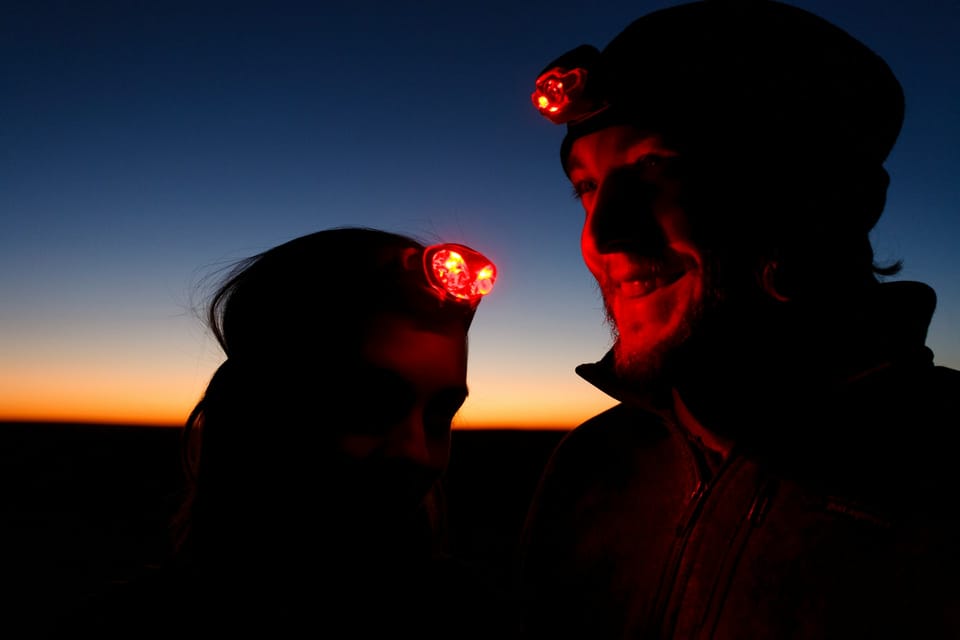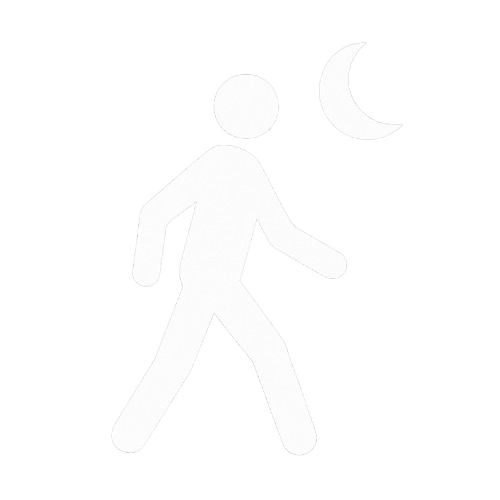Urban Safety and Trail Etiquette for Night Hikers

When streetlights begin to flicker on and the urban landscape transforms into something both familiar and mysterious, a different kind of adventure awaits. The city after dark becomes a shared sanctuary where runners trace illuminated paths, cyclists weave through pools of amber light, and wildlife emerges from hidden corners to reclaim their ancient routes.
As a night hiker stepping into this nocturnal ecosystem, you become part of this silent society. It's a society that requires awareness, respect, and an understanding of whom the inhabitants are.
The Five Pillars of Urban Night Safety
Like building blocks that support your entire nighttime experience, these five elements create a foundation of security. Remember them with the simple acronym P-L-V-C-A, letting each letter settle into your preparation routine.
Plan your journey with the same care you'd plan any meaningful experience. Download offline maps that will guide you when signal strength wavers. Check park hours before you step into the darkness. Know when transit systems wind down for the evening, ensuring your return path remains open like a welcoming door.
Light becomes your constant companion and your gift to others sharing the path. A headlamp producing 150 to 300 lumens creates a sphere of visibility around you, while spare batteries or a portable power bank ensure that sphere never dims unexpectedly. This isn't just about seeing—it's about being seen, about announcing your presence with courtesy rather than surprise.
Visibility wraps around you like protective armor made of light. A reflective vest or ankle bands catch and throw back every passing beam, making you visible to other travelers in the night. When your route includes roadway crossings, a small rear-facing blinker adds an extra layer of recognition, speaking the same visual language that cyclists and runners already understand.
Awareness sharpens naturally as you tune into the nocturnal world around you. Keep one ear open to the sounds of the city night, like the approaching footsteps and the rustle of wildlife in nearby vegetation. Scan behind you occasionally. Notice well-lit bailout points like 24-hour convenience stores, late-night cafés, or transit stops that offer refuge if plans need to change.
Creating Your Personal Security Envelope
Urban night hiking is often safest when shared, but solitude has its own rewards. When hiking with a companion, you double your awareness and halve your vulnerability. When choosing to walk alone, technology becomes your hiking partner. Apps like Life360, iMessage location sharing, or WhatsApp live location are some options.
Choose your routes with intention, favoring well-lit, frequently traveled paths over shortcuts that disappear into nowhere land. Sometimes the longer way becomes the wiser way. Your pockets should carry the essentials of urban preparedness: identification that speaks for you if needed, a small amount of cash for unexpected transit needs, a bus pass, a whistle that can sound the alarm, and basic first aid supplies for minor mishaps.
Trust the wisdom that rises from your intuition. If a section of trail feels different — perhaps a prominent streetlight has failed, or a group has gathered in a way that shifts the energy of the space — honor that feeling. Change your route, call for a ride, or make like Lao Tzu and pause until the situation clarifies itself.

Urban Wildlife: Respectful Coexistence
The city night belongs to more than human travelers. Wildlife follows ancient routes that weave through urban spaces, and encounters become opportunities for wonder rather than concern when approached with knowledge and respect.
Raccoons appear frequently near trash receptacles and water sources, their intelligence and curiosity making them bold but not aggressive. Maintain about ten feet of space and resist any urge to feed them. Your restraint protects both their wildness and the safety of future hikers.
Coyotes move through golf courses, parks, and greenbelts like shadows with purpose. If you encounter one, stand tall, make yourself appear larger, clap your hands to create noise, and back away slowly while maintaining eye contact. Keep any pets close and leashed.
Skunks prefer creek lines and brushy areas, emerging at night to hunt and explore. If you encounter one, freeze in place, dim your headlamp to reduce stress on the animal, and retreat quietly. Sudden movements or bright lights can trigger their defensive response.
Overhead, owls and bats write invisible stories across the night sky. Pause to appreciate these aerial artists, keeping noise levels low to avoid disrupting their hunting patterns.
Snakes seek warmth on cool nights, often found on rock walls or paved areas that retain heat from the day. Shine your beam ahead consistently, giving yourself time to step around rather than over any wildlife you encounter.
The golden rules remain simple: keep snacks sealed in your pack, maintain leash control of pets, and resist the urge to use flash photography, which can disorient nocturnal animals and disturb their natural behaviors.
Understanding Local Regulations
Urban night hiking exists within a framework of local rules that vary from place to place and season to season. City parks often close at 10 p.m. However, greenways and multi-use trails frequently remain open around the clock, offering continuous access for nocturnal explorers.
Wildlife refuges and university trails may operate under different schedules, sometimes restricting access from dusk to dawn to protect sensitive habitats or ensure campus security. These limitations protect both wildlife and hikers, creating boundaries that preserve the wilderness experience within urban settings.
Check official websites or posted signage before exploring any new route, and verify regulations each season as policies can shift with weather patterns, wildlife protection needs, or community feedback.
The Night Hiker's Code: Six Principles for Urban Adventures
These guidelines form the ethical foundation of responsible urban night hiking, creating a framework that protects the experience for everyone who seeks solace in the city's nighttime trails.
Plan intentionally, never improvise carelessly. Preparation becomes your primary safety tool, more valuable than any piece of gear you might carry.
Light your way forward, mark your position behind. A headlamp announces your direction of travel while reflective clothing communicates your presence to approaching traffic.
Pack out everything you bring, leave no trace behind. The night trail should show no sign of your passage.
Keep visibility high and volume low; city residents sleep nearby. Your night hike should not become someone else's disturbance. Avoid looking suspicious or creepy.
Observe wildlife with respect, never feed or disturb. Your presence should not alter their natural behaviors or make them dependent on human interaction.
Share your photos and experiences, but protect sensitive locations. Document the beauty you discover while preserving the secrets that make certain places special.
Your Pre-Departure Routine
Before stepping into the urban night, take a moment to run through this essential checklist, letting each item settle your mind and prepare your body for the adventure ahead:
Confirm your route is saved offline on your device, ensuring navigation remains available even when cellular signals weaken. Check that your phone battery shows at least 80% charge and that a portable power bank travels with you as backup energy.
Test your headlamp (if you're using one) by cycling through its brightness levels and red-light mode, replacing batteries if the beam appears dim or unsteady. Verify that your reflective gear catches light from at least ten feet away—if it doesn't glow under street lighting, it won't protect you on darker trail sections.
Ensure your pockets contain identification, a small amount of cash or a transit card, a whistle for emergency signaling, and basic first aid supplies for minor mishaps.
Send your departure text: "Starting my night hike now, expected return time 4 a.m." This simple comm creates accountability and provides peace of mind for both you and those who care about your safe return.
Joining the Silent Society
When you hike with clear intention and respect the nocturnal ecosystem around you, you become a welcome member of this silent society. Every runner you pass safely, every cyclist you alert to your presence, every owl whose hunting you observe without disruption become part of a larger story of urban coexistence.
The night trails are waiting, illuminated by streetlamps and starlight, alive with possibility. Step into this world with preparation, move through it with awareness, and discover that the city you thought you knew has been hiding an entirely different face—one that only reveals itself to those willing to walk quietly through the darkness.
